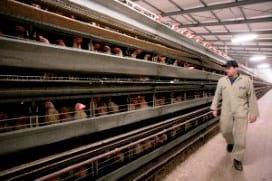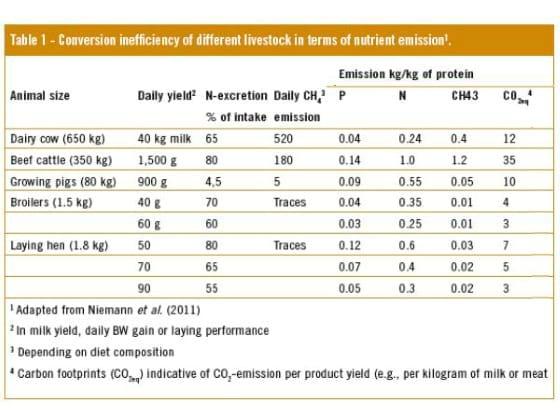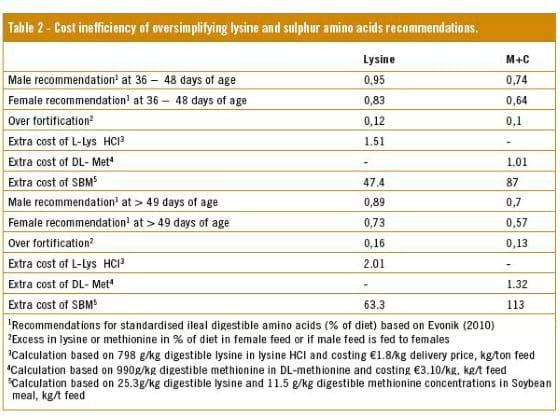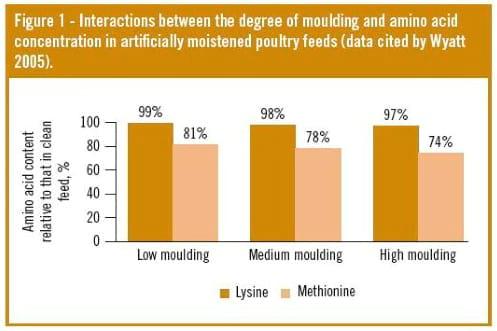Fighting a war against amino wastages
Published: June 25, 2013
By: Dr. David O. Akinde (Fusion BioSystems)
In today's efficient conscious world, we save on anything and everything including communication. One of these is abbreviations. Recently I stumbled across one, which I called WAAW! Translation? War Against Amino Wastages! Amino wastages are unnecessary biological losses of amino acids, especially critical ones like methionine, lysine and threonine. In this war the call is to adopt a zero waste policy, doing this will recover more cost as amino acids are among the most expensive nutrients in animal rations.

In large animal units small inconsistencies in amino acid values can lead to enormous ingredient and financial wastes.
Amino acid inefficiencies are seen in the industry everywhere (Table 1), some of which are avoidable and cry out for improvements. Dealing with these waste's demands understanding of efficiency of utilisation and to control physiological and extraneous dietary factors influencing it. The efficiency value captures metabolic usage of nitrogen, and consequently final dietary inclusion. Age interference is related to reduced potentials for protein gain as animals advance in age. In highly selected meat ducks, we observed 20 points higher protein efficiency in young compared to adult ducks (Akinde 2007). In other words, young animals metabolise amino acids at higher efficiency than adults. This is why dietary amino acid concentration should fit physiological age. In growing birds, the male sex generally utilise amino acids more efficiently than females. Not acsucommodating these facts in feeding poultry is reckless wastage, especially in large fattening complexes involving millions of birds.Some argue the logistics needed to adjust feed N density to age is too cumbersome. Still others supposed that 'not all amino acids are altered by sex' (Baker, 2009), and especially that 'sex disparities within recommendations are not huge'. Assuming no change in feed consumption or FCR, one decimal point excess in dietary amino acid density represents a mountain of waste too large to be ignored.Illustrating the relationship between feed efficiency and gender, Table 2 shows that companies using male lysine or M+C specs for both sexes will be wasting 1.2-1.6 kg lysine or 1-1.3 kg M+C/t feed consumed by 36 - >49 days old female broilers. Potentially, these wastes can drain 1.51-2.01 kg L-lysine HCl or 47-63 kg of SBM/t diet to fulfil the needless digestible lysine gap. Similarly, digestible M+C wastage alone could attain 1.0-1.32 kg or 87-113 kg/t feed if supplied via DL-methionine or SBM, respectively. To avoid these profit depleting costs, amino acid recommendations should be viewed not as fixated but as moving figures adjustable to physiological and economic factors. Necessary logistics shifts need not be avoided either.
Heat suppression of amino acid efficiency
Thermal challenges, like in the tropics, should motivate producers to implement N adjustment. Heat hinders feed utilisation, partly because the gut simply collapses. Significant decreases in villus height and jejunal weight astrophication were demonstrated in birds suffering experimental hyperthermia (Mitchell and Carlisle, 1992; Carles et al., 2006). Other causes of reduced nutrition during heat are disturbances to digestibility and brush border AA transport mechanisms, plus unfavourable endocrinal modifications. Solutions here include improved dietary amino N balance. Ironically, aside energy, amino N balance is hardly ever fine-tuned in these circumstances.
Extraneous dietary factors (fibre, phytate) induce digestive stress hampering protein utilisation. These interferences are partly countered by the digestible amino acid formulation. Digestibility databases are available, which when applied, can make the difference between waste and efficiency. These tables continue to be fine-tuned, as factors impacting digestibility continue to be defined. Physiological stressors also continually differ, field formulators are thus advised to stay current on published research.
Recent research at Purdue opened a new vista into stress interaction with amino acid nutrition. The authors showed that artificial coccidial challenge via vaccination impact basal ileal absorption of amino acids (Adedokun et al., 2012). So will cocci or vaccinations impact amino acid digestibility values? This question is key, as the world switches from antibiotics to more preventive health systems. Also the list of diseases and prescribed vaccine cocktails continue to grow worldwide. Further research will offer more answers.
Moulds and mycotoxin waste amino acids
Moulds and mycotoxins also limit N efficiency and dealing with them is not as straight forward. Under suitable moisture and warmth conditions, moulds will deplete the amino acids in stored feedstuffs and mixed feeds. In artificially moistened feeds (Figure 1), it was shown that between 1-3% lysine and 19-26% of methionine could be lost to fungal activities alone (Wyatt, 2005). This is costly whether or not buying or selling of protein ingredients is benchmarked on amino acid concentration. Mycotoxins on the other hand, change amino acid utilisation at intestinal and cellular level. Verma et al. (2002) observed a 51-133% reduction in total protein efficiency in birds fed 2-4ppm aflatoxin or ochratoxin A. Whereas co-intoxication of both toxins (1-4 ppm) depressed protein efficiency by as much as 79-127%. Kermanshahi et al. (2007) established a 5.7% reduction in digestibility of crude protein when 1.2 ppm of AFL was fed to growing broilers. The mechanistic basis are that of these effects have been traced to suppression of enzymatic activity, disturbance to intestinal transport systems, attenuation of cellular protein synthesis and modifications to gut functionalities (Chowdhury and Smith 2005; Applegate et al., 2009). These show that amino acid utilisation will benefit from protection of formulated feeds with anti-toxin additives.Sulphur amino acid utilisation is particularly susceptible to mycotoxicosis. Veltmann et al. (1981) fed birds 0-4 weeks 66%, 100% or 134% of NRC (1984) dietary M+C specs at 0% (controls) or 1.25% aflatoxin contamination. Birds suffered growth depression as aflatoxin ingestion increased especially at lower M+C intake. But this was corrected as M+C intake went beyond 100% of reference. That is, an elevation in methionine requirement under aflatoxicosis. Moreover intoxicated birds had higher blood cysteine concentration at standard M+C level. Since cysteine is a precursor of glutathione (a detoxifier) increased M+C optimum likely represented a need for detoxification.
Regulators of immunogenic amino acids optimum
Added to their proteogenic functions, amino acids including tryptophan and arginine feed into the immune system. Thus immunogens like mycotoxins can disturb their metabolism. A pathophysiological basis is that immune stimulation result in pro-inflammatory reactions/fever reactions. These reactions generate the so called cytokines, having these amino acids in surplus amounts (Le Floc'h et al., 2004). Consequently a 'specific immune requirement' is induced. Thus a modified dietary optimum of immunogenic amino N during mycotoxicosis may be assumed. An interesting interaction involves fusaria toxins and tryptophan in neuropathologies (Swamy et al., 2004). Yegani et al. (2006) reported fusariatoxicosis mediated depressions in feed intake and egg yield in layer birds correlated to elevated brain serotonine. Since serotonine is a product of tryptophan metabolism, a change in dietary tryptophan optimum may be postulated when fusarium toxins trigger serotonine secretion. Whether these neurochemical events skew practical tryptophan recommendation is not yet known.Reducing dietary amino acids wastages is a remedy for high feed cost. Options include accounting for major factors minimising amino acid efficiency. These factors include age, sex, unfavourable heat, and mycotoxins. But more information is needed on how to make practical adjustments for some of these factors. For example, how mycotoxins do modify amino acid requirements under chronic low level toxicoses common in the field. Such information will help to formulate diets which assist birds to cope better with field stressors, therefore improving economics of feeding.



This article first appeared on All about Feed, February 2013.
Related topics
Authors:
Join to be able to comment.
Once you join Engormix, you will be able to participate in all content and forums.
* Required information
Would you like to discuss another topic? Create a new post to engage with experts in the community.
Create a post





.jpg&w=3840&q=75)